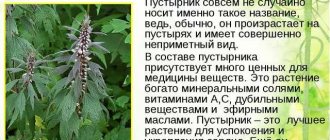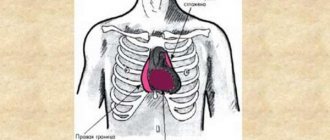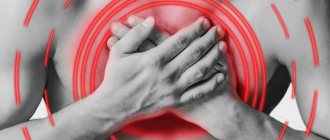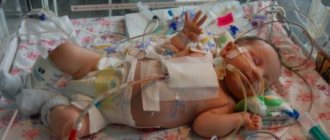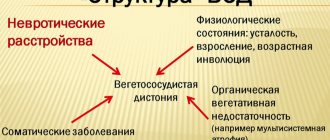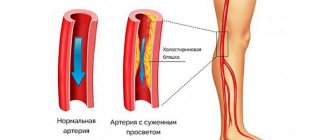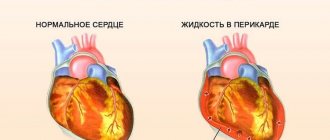Symptoms
The clinical sign is characterized by pressing or squeezing pain that occurs behind the sternum and radiates to the left shoulder blade or arm. Most often it occurs during emotional or physical stress, however, as we learned above, it can also occur at rest.
The threshold for the development of pain is determined by the degree of damage to the coronary arteries. If there is severe damage to three coronary arteries, spasm will occur even under minimal load. Angina at rest occurs mainly at night.
Attacks of this form of angina are longer and more intense. The pain increases more slowly than it disappears. It may be accompanied by the following symptoms:
- nausea;
- sweating;
- lack of air;
- dizziness;
- heartbeat.
If the spasm leads to a full-blown angina attack, the patient feels a strong fear of approaching death, so he freezes and tries not to move. The man's face turns pale, he presses his hand to his chest. The extremities may also become numb and cold.
As we already know, angina takes different forms, which are caused by spasm of the heart vessels, so it is worth recalling the classification of angina.
Angina pectoris. It is characterized by transient pain in the chest. They are caused by physical or emotional stress, which increases the metabolic demands of the heart muscle. In this case, the pain disappears when taking nitroglycerin or at rest. Angina pectoris includes several types. For example, a spasm that occurs for the first time, that is, angina, lasts about one month or less from the first manifestation. The prognosis and course are different, so this form may develop into another.
Stable angina lasts more than one month. It includes four functional classes. The first class is characterized by an attack that develops with excessive loads performed for a long time and intensively. In the second class, physical activity is limited, an attack occurs when climbing more than one floor and when walking more than 500 meters.
This usually occurs during bad weather and emotional excitement. In the third functional class, an attack occurs when climbing one floor and walking less than 200 meters. The fourth functional class is characterized by sharply reduced physical activity and the development of seizures at rest.
Spontaneous angina. It is caused only by a sudden spasm of the heart arteries. Attacks occur only at rest, early in the morning or at night.
- Shoulder pain when moving the arm back
Muscle spasms in the chest area
Content:
Chest spasms and the causes of this phenomenon worry many people, because almost every person experiences unpleasant sensations throughout their lives.
Before finding out the causes of this phenomenon, you should determine what a spasm is.
A spasm (cramp) is an uncontrolled muscle contraction in which the muscle fibers cannot be relaxed. Spasms are often accompanied by sharp pain. It is worth noting that cramps can occur in any muscle group, affecting individual muscle fibers or their entire complex.
Most often, muscle spasms develop in the thigh and lower leg, although their development along the chest, abdomen or limbs is also not uncommon. In this case, either a sharp pain occurs, lasting only a few seconds, or a very intense and prolonged pain that patients cannot tolerate. In addition, pain sensations can have a cyclical course and be repeated several times.
Heart spasms - possible causes
The sources of the pathological condition characterized by problems with the functioning of the heart muscle have not been fully studied. Young women and adolescents are more often at risk. It should also be noted that there is an increased risk of an attack for people suffering from blood disorders (poor clotting).
In addition to capillary angina, spasm of the heart vessels can be caused by:
- vascular changes resulting from syphilis, rheumatoid diseases;
- various infections and allergic reactions to external irritants;
- some diseases of the gastrointestinal tract.
A separate group can be divided into a cause such as atherosclerosis. The disease negatively affects the patency through the coronary arteries, thereby significantly increasing the likelihood of cardiovascular spasm.
The essence of the problem
The functioning of blood vessels is regulated by many factors: the activity of the autonomic nervous system, the volume of circulating blood, and the level of peripheral resistance. Failure of homeostasis mechanisms leads to various disorders, including vasospasm.
Spasm of the coronary (coronary) vessels is a sharp and sudden narrowing of the lumen of the arteries due to contraction of their smooth muscle muscles. Despite the fact that this pathology is temporary, it leads to insufficient supply of oxygen and nutrients to the heart muscle and the development of angina pectoris.
The heart needs a constant supply of large amounts of oxygen
Vasospastic angina (Prinzmetal's angina) is a special form of insufficiency of coronary blood supply that develops at rest. It is manifested by pain and discomfort behind the sternum, shortness of breath, a feeling of fear of death and panic. Unlike exertional angina, this pathology is not associated with physical or psycho-emotional stress and often develops at night.
Note! The most dangerous time for the development of acute cardiovascular accidents is considered to be 3-4 am. According to statistics, most heart attacks develop at this time.
Experts have not established the exact reasons for the development of spasm of the coronary arteries.
Doctors note the impact of:
- Vascular atherosclerosis. In addition to mechanical narrowing of the lumen of the arteries due to cholesterol plaques, this disease leads to disturbances in the innervation of the vascular wall and provokes the development of vasospasm above or below the site of blockage.
- Gastrointestinal diseases.
- Infectious-inflammatory and allergic diseases.
- Pathologies accompanied by metabolic disorders.
- Smoking.
- Rheumatoid vascular lesions.
- Systemic changes in vascular walls in syphilis.
Patients with atherosclerosis often suffer from this problem.
The main role in the pathogenesis of vasospasm is played by damage to the vascular endothelium, leading to an increase in the production of vasoconstrictor substances that contribute to the narrowing of the artery. The synthesis of vasodilators, leading to relaxation of smooth muscle cells and expansion of the lumen of blood vessels, on the contrary, is suspended.
- Arms hurt from shoulder to hand: possible causes
Manifestations of the pathological condition
Most often, heart spasm provokes pain and a feeling of heaviness in the chest area. Angina pectoris can cause an attack, both at rest and during overexertion. Symptoms often spread to other important body systems. Patients complain of increased heart rate, breathing problems, nausea, loss of orientation in space, and abnormal sweating.
Most doctors recommend dividing heart muscle cramps into two groups.
- A spasm of the heart muscle that occurs with a sharp increase in physical activity (angina pectoris) usually causes symptoms such as severe pain and a feeling of shortness of breath. Signs of the disease may appear periodically throughout the month.
- A spontaneous attack often takes a person by surprise. The painful signs of artery compression usually appear in the early morning or at night without physical or emotional overload.
It is possible to determine that a person has a heart spasm by external signs. Usually the patient’s skin color changes (turns pale), and the hands become cold. If the described manifestations are accompanied by chest pain, you should immediately call an ambulance or transport the person to a medical facility yourself.
Convulsions in the heart area
Spasms can occur in any organ, so they are divided into peripheral and main. Vasospasms or peripheral spasms are pathological conditions that occur locally, for example, in the vessels of the lower or upper extremities. This happens most often due to physical fatigue, changes in the rhythm of life or climate change. Peripheral spasms appear due to the fact that the tone of the capillaries that are located in the skin is disrupted. The affected areas turn pale, then turn blue, numbness and itching occur.
Spasms of the great arteries damage the large blood vessels that supply the heart and brain. Convulsions in the heart area are coronary spasms that do not last long but begin suddenly. Cerebral vasospasm is a spasm in large vessels that go to the brain.
With coronary spasm, chest pain appears, which radiates to the arm or shoulder blade. This can occur at any time, including at night when completely at rest. This phenomenon is considered dangerous, as it damages the blood vessels that supply the heart.
How to relieve heart spasms
First of all, it is necessary to make sure that the causes of the pathology lie precisely in the arteries. Heart spasm can be diagnosed by performing a hardware scan. To confirm concerns, you will have to undergo an electrocardiogram (determining the ST interval), daily monitoring or echocardiography.
Bicycle ergometry and laboratory blood samples to identify cardiac troponins and other markers indicating severe myocardial damage would be useful.
Unfortunately, there is no clear answer to the question of how to relieve cardiac muscle spasm. Therapy is selected individually, taking into account the physical characteristics of the patient and the presence of concomitant diseases. People at risk are advised to carry nitroglycerin with them. If pain occurs in the chest area, you should take this drug in the form of a tablet or a diluted alcohol solution. Usually unpleasant symptoms disappear after a few minutes.
Heart spasms can be the first sign of a dangerous vascular disease. If there are irremovable negative factors (bad heredity, age), a cardiologist or arrhythmologist can prescribe preventive treatment. The most commonly prescribed drugs are anti-ischemic drugs, calcium channel blockers, antioxidants, and anti-sclerotic substances.
What to do if heart spasm becomes a symptom of a serious illness? Surgical treatment is recommended when dangerous arterial defects are identified and when pharmacological effects are low.
- Neck pain radiates to the shoulder blade - possible causes and treatment
- Angioplasty is an operation using a special catheter that expands the lumen of the ducts.
- Coronary bypass surgery is the restoration of blood flow by implanting a “bypass branch” of the circulatory system.
Today, the stenting method is increasingly used. If cardiac spasm occurs due to weakness of the vessel walls, then a special tubular mesh is installed in it, which ensures blood flow.
Treatment
Treatment is aimed at relieving spasm. It is very important to prevent attacks and complications of angina pectoris. As soon as an attack of angina occurs, it is necessary to take nitroglycerin. It can be taken in the form of a tablet or in the form of an alcohol solution; one or two drops of a one percent solution on a piece of sugar should be kept in the mouth until completely dissolved.
Usually the pain stops after a couple of minutes. If the attack cannot be stopped, nitroglycerin can be taken again, observing an interval of three minutes. However, you should not take this drug more than three times, as this contributes to a sharp decrease in blood pressure.
It is important to carry out planned drug therapy for the disease. Typically, the doctor prescribes anti-ischemic drugs that reduce the myocardium's need for oxygen. Such drugs include long-acting nitrates, calcium channel blockers, and so on. It is also important to take anti-sclerotic drugs, antiplatelet agents and antioxidants.
If severe angina develops, your doctor may recommend surgery. This includes balloon angioplasty or coronary artery bypass surgery.
- Coronary artery bypass grafting is a surgical intervention based on the implantation of a blood vessel into a blocked vascular area to restore blood flow. You could say that this is creating a workaround. For transplantation, leg veins or retrosternal arteries are used.
- Angioplasty involves the use of a catheter with a small balloon at the end. The catheter is advanced to the site of narrowing of the artery, where the balloon is stretched and inflated, thereby eliminating the spasm.
However, in order to increase the duration of angioplasty, a method called vascular stenting has been developed. A stent is a metal tubular mesh that expands in the artery and acts as a kind of frame. This prevents the artery from narrowing and spasming. All of the above operations have been carried out for quite a long time, but some patients develop restenosis, that is, repeated narrowing of the vessel. There are two reasons for this.
- During angioplasty, the artery stretches and opens, however, its walls are elastic, so subsequently it can narrow again.
- Development of scar tissue. Usually the amount is small, but sometimes it is significant, so blood flow may again be obstructed.
The stent is a foreign body, and therefore can cause a negative reaction in the body in those patients who were implanted with a conventional metal stent. This reaction takes place in the form of vasoconstriction. However, this problem can be avoided by using other stents that are coated with a drug-eluting polymer.
to the point ↑
Clinical case
A 46-year-old man came to our clinic with complaints of pressing pain in the chest, which arose at rest, mainly at night, and spread to his left arm. The patient suffers from the problem for 3 months. During the day the symptoms disappear. Exercising in the gym does not aggravate the patient's condition. The disease is associated with stress. The man smokes 1.5 packs of cigarettes a day and suffers from hypertension (160/100 mm Hg). ECG at rest without abnormalities. We decided to use Holter monitoring. At three o'clock in the morning an attack of ischemia lasting 4 minutes was recorded. In the morning, when the ECG was re-registered, no pathological changes were detected. Other laboratory and instrumental tests are normal. The patient was diagnosed with IHD. Vasospastic angina, atherosclerosis of the coronary arteries. Arterial hypertension stage II, degree 2, risk. I was prescribed Amlodipine (10 mg orally once a day), Nitroglycerin (1 tablet under the tongue during an attack), Aspirin (75 mg once a day), Rosuvastatin (20 mg per day), lifestyle correction - quitting smoking, minimizing stress. When re-examined 2 weeks later, the patient noted a complete absence of new attacks of chest pain. Feels good, exercise tolerance without restrictions. I would be glad if this article was useful. Share your experience about episodes of compressive pain in the heart in the comments: how you saved yourself and what helps better. Our experts will help you understand the situation. The following sources of information were used to prepare the material.
https://cardiograf.com/ibs/zhaba/spazm-koronarnyh-sosudov.html
Diagnostic methods
To diagnose variant angina, according to modern recommendations and protocols, I use an integrated approach to assessing the patient’s condition. Much in the process of identifying the underlying disease depends on the quality of the first conversation with the patient.
The key features that allow me to diagnose coronary artery spasm are:
- Episodic symptoms that are not associated with physical activity. Patients may suffer from chest pain in the morning, but go to the gym in the afternoon and do a full range of exercises.
- The appearance of discomfort at approximately the same time of day.
- The short duration of the attack, which goes away on its own with further normalization of the person’s condition.
To confirm the appropriate diagnosis, I always additionally prescribe a number of instrumental and laboratory tests.
Instrumental
Traditionally, the first step is to record an ECG. This method allows you to assess the electrical function of the heart, which changes against the background of various forms of coronary artery disease. It is important to note that there may not be any abnormalities on the ECG outside of an attack. This speaks in favor of spasm of the coronary arteries. However, for the reliability of the study, it is necessary to “catch” the patient during the period of pain, which is sometimes extremely difficult, given the night attacks. The film will record ST segment elevation, which is typical of decreased myocardial blood supply.
For the convenience of the patient and to simplify my task, I use Holter monitoring. The technique involves round-the-clock recording of an ECG in a specific patient with further interpretation of the results. With the help of this study, I can easily determine the time of the episode of coronary artery spasm.
Additional Methods
To fully assess the patient’s condition, the following procedures are also used:
- Angiography of cardiac vessels. The essence of the method is to visualize the patient’s coronary arteries on the monitor after introducing a contrast agent into the bloodstream. This allows me to pinpoint the location of the spasm. However, again, you need to “catch” the patient at the moment of the attack.
- Echocardiography. The technique is based on ultrasound examination of the heart. On the screen you can see the cavities of the organ, and I evaluate its functional activity. With Prinzmetal's angina, no special pathological changes occur.
- Test with dosed load. You are asked to exercise on a stationary bike or treadmill in a controlled environment. At this time, an ECG is recorded, pressure is measured and the general condition is assessed. If pain occurs in the heart, the procedure is stopped. However, with variant angina, patients traditionally tolerate the load well.
What does spasm of the coronary vessels of the heart lead to?
Symptoms of coronary spasm begin with chest pain radiating to the shoulder blade or arm. The nature of the attacks varies. Pain can occur at night, at rest or during the day, against the background of increased physical activity. Pain in the heart area is explained by the fact that during the spasmodic process the coronary vessels that supply the heart muscle are damaged. Unfortunately, the appearance of attacks of pain is a harbinger of the development of angina pectoris - heart disease. Among the reasons causing the development of the disease:
- Atherosclerosis is the formation of cholesterol deposits on the walls of blood vessels, leading to a narrowing of the cross-sectional diameter of the blood tunnels through which blood circulates. With atherosclerosis, the elasticity of blood vessels decreases and they become fragile. A spasmodic process occurs when the lumen of the coronary arteries narrows by half. The more vessels affected by pathology, the stronger the attack.
- Infectious diseases.
- Gastrointestinal diseases.
- Allergy.
The causes of angina pectoris can be roughly divided into two groups:
- causes that can be corrected;
- unavoidable reasons.
It is within a person’s power to quit smoking and taking specific medications; bring your physical shape back to normal; increase vital activity; keep blood pressure under control; do not succumb to the effects of psycho-emotional stress. Unfortunately, a person is not able to influence his own heredity and age.
Consequences and prevention
Spasm leading to the development of angina pectoris significantly increases the risk of myocardial infarction. The most dangerous thing that can happen is death. That is why it is necessary to be examined in time and pay attention to any symptoms. It is also very important to prevent spasms and the development of angina pectoris.
Basic methods of prevention:
- to give up smoking;
- blood pressure control;
- limiting physical and emotional stress;
- limiting the consumption of alcoholic beverages;
- proper nutrition;
- moderate physical activity.
By following these simple rules, you can avoid problems not only with blood vessels, but also with other organs. Let's not forget that most often our health is in our hands!
Vasospasm: what is it?
The medical directory lists a great variety of cardiovascular diseases. And often the formation of various pathological conditions, such as the formation of cholesterol plaques or the occurrence of vascular spasms, lead to more serious disorders in the body, that is, to the development of serious diseases - atherosclerosis, angina pectoris, coronary heart disease (CHD).
Angiospasm is a short-term contraction of the walls of blood vessels and an increase in their tone, due to a narrowing of the lumen in the muscle cavity.
In this case, blood collects in some areas, while others do not receive sufficient nutrition. There is a violation of oxygen enrichment of body tissues. Typically, vascular spasm does not last long, up to 20 minutes. However, there are cases when disturbances in the functioning of the vascular system become protracted. Spasms cause severe pathology - vascular crisis - a change in the filling of blood vessels against the background of impaired central circulation. Both large and small blood vessels are susceptible to spasms.
Smoking, a sedentary lifestyle, periodic stress, excessive alcohol consumption, increased platelet activity - the combination of these factors causes the occurrence of spasmodic syndrome, this is its main cause. Spasms of the coronary vessels can occur in various areas of the human body, so they are usually classified.
What is heart pulsation?
In medical terminology there is the concept of pulsation. It stands for: movements of the walls of the heart and blood vessels in the form of shocks, which is characterized by transmission displacements of soft tissues that appear during contractions of the heart muscle.
Ripple is a broader concept than pulse, because it refers only to the pulsation of the walls of vessels pumping blood, which is caused by the passage of a pressure pulse wave passing through the vessel and forming in the aorta.
Ways to quickly restore vascular tone
Angiospasm usually occurs at the wrong moment. Tingling and numbness of the skin can be tolerated, which cannot be said about the increased tone of the cerebral and coronary arteries. It is dangerous not only because of its symptoms, but also because of its complications. The patient needs to find out what to do to alleviate the condition. When it comes to arms and legs, the following tips will work:
- Apply massaging movements to the affected area of the skin. The tissues will begin to warm up, which will improve hemodynamics and relax the blood vessels. Such stimulation relieves spasms caused by cold in 4-5 minutes.
- Hot baths for the upper or lower extremities with added salt will relieve symptoms of increased vascular tone. It is enough to dip your arms (up to the elbows) or legs (feet) for 10-15 minutes. Instead of a bath, you can use a hot wrap by wrapping the affected limb with a warm cloth.
The following methods will help relieve the symptoms of cardiac muscle spasm:
- hot tea with honey and lemon balm;
- decoctions of hawthorn, valerian and motherwort.
Folk remedies and physical methods of influence will help with retinal vasospasm:
- Apply a cold compress soaked in infusion of dandelion, plantain and St. John's wort to the eyelids for 10-15 minutes.
- Massage alternately the forehead, temples and back of the head for 10 minutes.
The following methods will help restore normal cerebral vascular tone:
- soak your feet in cold water for 3-5 minutes;
- lie down on the bed with a pillow under your head;
- massage the temporal and occipital areas;
- for a headache, take a Spazgana or Nurofen tablet;
- wash your face with cold water;
- use a sedative (Corvalol, hawthorn tincture);
- drink warm tea with honey.
Methods used at home can only temporarily alleviate the condition. Full treatment will be carried out after diagnosis. If the severity of symptoms does not decrease, you should call an ambulance.
Causes and symptoms of heart spasm
Spasm of the coronary arteries can be caused by pathological processes occurring in the body:
- atherosclerosis;
- pathologies of the gastrointestinal tract and internal organs;
- diseases caused by infections and allergens;
- complications of rheumatism and syphilis.
Various factors can accelerate the development of vasospasm of the heart muscle. Only some of them can be eliminated. Their list is as follows:
- alcohol consumption;
- anemia (anemia);
- neurosis caused by constant stress;
- excess weight;
- physical overload;
- prolonged exposure to cold;
- high blood viscosity;
- exposure to medications;
- hypertension, manifested by high blood pressure;
- intoxication of the body.
The irremovable group of reasons is not so voluminous:
- age;
- gender;
- genetic factor.
It is impossible to avoid wear and tear of the cardiovascular system or hereditary predisposition. Gender is on the list due to statistics.
Men over 40 years of age are significantly more likely to develop atherosclerosis. The indicator levels off after 60 years, when the activity of the female hormonal system decreases.
Symptoms of cardiac vasospasm are usually the following:
- confusion;
- pale skin;
- manifestation of cold sweat;
- increased heart rate (tachycardia);
- dizziness;
- breathing problems (difficulty taking a deep breath);
- decrease in extremity temperature
- panic attack;
- headache.
With spasm of the coronary vessels, caused by their narrowing to 60-70%, the symptoms include pain characteristic of angina pectoris. Such an attack can be stopped with Nitroglycerin. The coronary arteries dilate, which leads to a decrease in the severity of symptoms. Before taking it, it is advisable to measure your blood pressure, since the drug is approved only for normal and elevated levels. If nothing is done, the patient will feel pain for 20-30 minutes.
To avoid the development of vasospasm of the heart vessels, it is necessary to eliminate factors that have a negative impact. A full course of therapy is drawn up by a cardiologist after examination.
Causes of pain and its symptoms
Coronary spasm
Symptoms of coronary spasm include the following:
- the appearance of sudden pain behind the sternum, radiating to the shoulder blade or arm,
- increased heart rate,
- patients feel very sick
- dizziness appears, sweating increases,
- heartbeat increases,
- paleness of the skin,
- there is a lack of oxygen,
- with a prolonged attack, a state of panic increases.
- increased heart rate,
- coldness of hands and feet,
- the appearance of cold sweat on the forehead,
- dizziness,
- feeling of lack of air.
- colic in the area of the heart, behind the sternum, which is not eliminated even by taking nitroglycerin,
- a feeling of severe pain not only in the heart, but in the area of the shoulder blade, neck, arm,
- the appearance and increase of panic, fear,
- a sharp drop in blood pressure,
- cardiac arrhythmia.
- cardiac colic,
- the appearance of shortness of breath,
- chills and fever,
- sharp pain when inhaling,
- swelling of the face,
- pronounced jugular veins.
- the occurrence of unpleasant painful sensations coincides with respiratory movements, felt when exhaling and when inhaling,
- the pain is not relieved by cardiac medications.
Usually, spasm of the coronary vessels does not last long, but even after short-term attacks occur, it is necessary to consult a doctor and examine the heart.
Myocardial ischemia attack
Typically, an ischemic attack occurs against the background of increased physical activity, as a result of which the heart requires more oxygen consumption than usual. If the blood vessels are pathologically altered, then they do not provide the required volume of blood and the heart suffers from ischemia - oxygen deficiency. The result of this is acute stabbing pain in the heart area, as well as:
The appearance of myocardial ischemia, when stabbing in the left side of the chest, is an alarming signal that the heart is not receiving enough oxygen, and any increased load on the organ can provoke a severe heart attack and aggravate the situation. Recently, doctors have been recording such ischemia in children. The next stage of heart damage is myocardial infarction.
Myocardial infarction
Pericarditis
When such signs occur, the main threat to the patient is compression of the heart by the swollen pericardium, so medical attention is urgently needed.
Hypertrophic cardiomyopathy
Osteochondrosis and intercostal neuralgia
If these two signs are present, there is no point in taking heart medications - it is best to use analgesics and consult a doctor.
